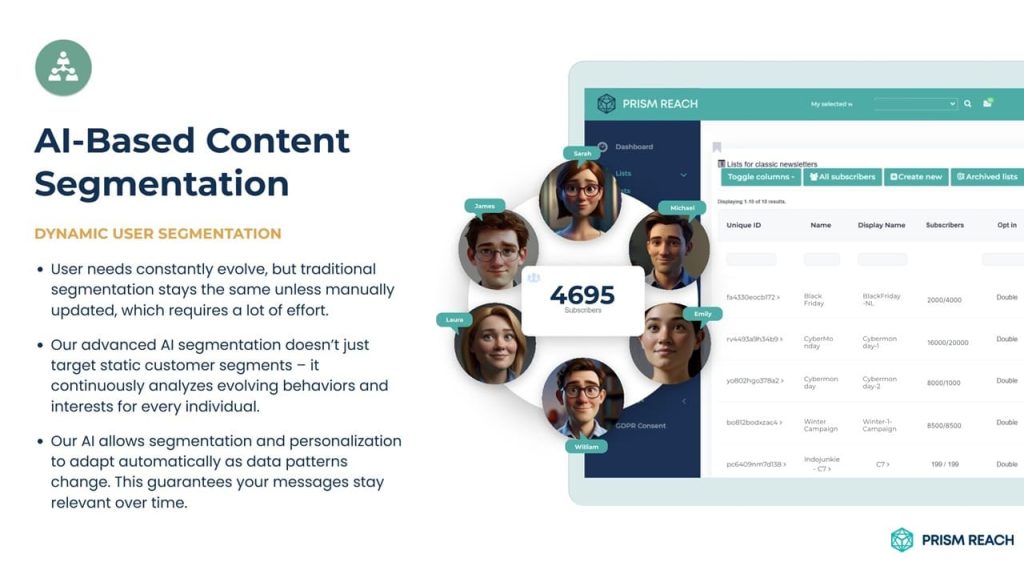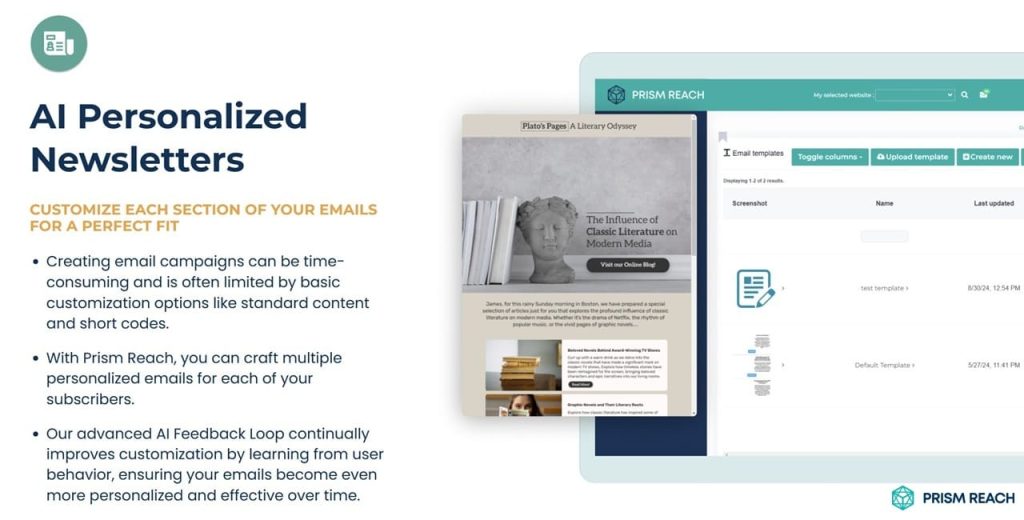In the ever-evolving landscape of digital marketing, email remains a cornerstone strategy for businesses of all sizes. As we navigate through 2024, understanding the cost implications of email marketing has become more crucial than ever. With the rise of AI-powered solutions and increasingly sophisticated targeting methods, the question “How much does email marketing cost per email?” is not just about numbers—it’s about value, efficiency, and return on investment.
This comprehensive guide delves into the intricacies of email marketing costs, exploring how factors such as list size, campaign complexity, and technological advancements influence the bottom line. Whether you’re a small business owner dipping your toes into email marketing or a seasoned marketer looking to optimize your strategy, this article will provide you with the insights needed to make informed decisions in the dynamic world of digital communication.
Key Facts
- The average cost per email for small businesses typically ranges between $0.10 and $0.30, while larger enterprises may see costs exceeding $1.00 per email.
- Email marketing platforms offer a wide range of pricing, from free entry-level services to premium options costing several hundred dollars per month for larger subscriber lists.
- Despite varying costs, email marketing consistently delivers high ROI, with a reported median return of $35.41 for every $1 spent.
- The global email marketing market is expected to grow to $17.9 billion by 2027, highlighting its growing importance in business strategies.
- AI-powered tools like Prism Reach can boost engagement rates by up to 40% through enhanced personalization and data-driven insights.
Decoding the Cost Structure of Email Marketing

Impact of Email List Size on Costs
The size of your email list plays a crucial role in determining the overall cost of your email marketing efforts. As your subscriber base grows, so does the complexity and resource requirements of managing your campaigns. Small businesses with limited subscribers may find themselves at the lower end of the cost spectrum, often paying around $0.10 to $0.30 per email.
This relatively low cost allows them to experiment with email marketing without significant financial risk. However, as businesses scale and their lists expand, the cost per email tends to increase. Mid-sized organizations might see costs between $0.30 and $0.50 per email, while large enterprises with extensive subscriber lists could face costs exceeding $1.00 per email. This escalation in cost reflects the increased demands on infrastructure, personalization capabilities, and advanced features required to effectively manage and engage larger audiences.
Platform Selection and Pricing Structures
The choice of email marketing platform significantly impacts the overall cost structure of your campaigns. The market offers a wide range of options to cater to different business needs and budgets. At the entry-level, platforms like Brevo provide free plans for small lists, making it accessible for businesses just starting with email marketing. As you move up the spectrum, more robust solutions like HubSpot offer advanced features but at a higher price point, potentially charging $750 to $1,000 per month.
The pricing structure of these platforms is typically tiered, based on the number of subscribers and the level of features included. For instance, basic email marketing platforms might charge around $9/month for 500 contacts, while more comprehensive solutions like Omnisend or ActiveCampaign could charge about $15 for the same number. It’s essential to carefully evaluate the features and capabilities offered by each platform in relation to their pricing to ensure you’re getting the best value for your specific needs.
Content Creation and Its Cost Implications
Content creation is a critical component of email marketing that significantly influences the cost per email. The quality and effectiveness of your email content can make or break your campaign’s success. According to industry reports, hiring a professional email content writer can cost anywhere between $15 and $200 per email. This wide range reflects the varying levels of expertise, complexity, and customization required for different types of email campaigns.
For instance, a simple promotional email might fall on the lower end of the spectrum, while a highly personalized, data-driven newsletter could command higher rates. The cost of content creation also extends to design elements. Custom email designs can increase costs substantially, with agencies charging either hourly or flat rates for intricate templates. Businesses must carefully balance the need for high-quality, engaging content with their budget constraints to achieve the best possible return on investment from their email marketing efforts.
Campaign Frequency and Resource Allocation
The frequency of your email campaigns plays a significant role in determining the overall cost of your email marketing strategy. As noted by a representative from WebFX, “Sending weekly blasts can dramatically increase your expenses compared to monthly newsletters.” This increase isn’t just due to the higher volume of emails sent, but also the additional resources required to create, manage, and analyze more frequent campaigns.
Each email campaign necessitates time for strategy development, content creation, design, testing, and post-campaign analysis. More frequent sends mean these processes are repeated more often, potentially leading to higher labor costs or the need for additional staff or outsourced services. Moreover, frequent campaigns may require more sophisticated automation tools to manage the increased workload efficiently. While higher frequency can lead to more touchpoints with your audience, it’s crucial to find the right balance that maximizes engagement without overstretching your budget or overwhelming your subscribers.
Advanced Features: Balancing Cost and ROI
Incorporating advanced features like automation and personalization into your email marketing strategy can significantly impact both costs and effectiveness. As highlighted by an Omnisend spokesperson, “Platforms with sophisticated automation tools tend to be pricier, but they often provide better functionality and results, which can justify the higher cost.” These advanced features, while potentially increasing upfront expenses, can lead to improved engagement rates and higher ROI in the long run.
Automation tools can streamline workflows, reducing manual labor and potentially lowering overall costs despite higher platform fees. Personalization capabilities, such as dynamic content insertion and behavior-triggered emails, can dramatically improve the relevance of your messages to individual subscribers. This increased relevance often translates to higher open rates, click-through rates, and conversions. When considering the cost of these advanced features, it’s essential to look beyond the immediate price tag and evaluate the potential long-term benefits and efficiencies they can bring to your email marketing efforts.
Integrating Hidden Gem Strategies
To elevate your email marketing efforts, integrating lesser-known but highly effective strategies can make a significant impact. Here are five hidden gem strategies that can transform your email marketing approach:
1. Utilize Freemium Models
Many email marketing platforms offer freemium models that allow businesses to start with no cost. This is particularly beneficial for startups or small businesses, enabling them to test the waters before committing to a paid plan. This strategy can help save initial costs while building an email list.
By leveraging freemium models, businesses can:
- Experiment with different platforms without financial risk.
- Understand essential features before upgrading.
- Gradually scale their email marketing efforts as their business grows.
2. Repurpose Existing Content
Instead of creating new content for every email campaign, repurpose existing blog posts, videos, or social media content into email format. This reduces content creation costs and maximizes the value of previously produced materials.
Benefits of repurposing content include:
- Lower content creation expenses.
- Consistent messaging across different channels.
- Extended lifespan and reach of existing content.
3. Leverage Automation for Cost Efficiency
Implementing automated workflows for welcome emails, follow-ups, and abandoned cart reminders can save time and reduce labor costs associated with manual sending. Automation can lead to higher engagement rates without increasing costs.
Key advantages of automation include:
- Consistent communication with subscribers.
- Reduced manual effort and associated labor costs.
- Enhanced ability to scale email marketing efforts efficiently.
4. Segment Your List for Targeted Campaigns
By segmenting your email list based on customer behavior or demographics, you can send more targeted messages that resonate with specific groups. This improves engagement rates and reduces the likelihood of unsubscribes, ultimately maximizing the return on investment.
Effective segmentation can help you:
- Deliver more relevant and personalized content.
- Increase open and click-through rates.
- Enhance overall campaign effectiveness and ROI.
5. Conduct A/B Testing on a Budget
A/B testing doesn’t have to be costly. Test subject lines, CTAs, and content formats on small segments of your list before rolling out to your entire audience. This approach helps ensure that you invest in effective strategies without overspending.
Benefits of budget-friendly A/B testing:
- Identify the most effective elements of your campaigns.
- Optimize campaigns for better performance.
- Reduce wasted spend on ineffective strategies.
Prism Reach: Enhancing Cost-Effective Email Marketing
In light of the various cost considerations in email marketing, Prism Reach emerges as a game-changing solution for businesses looking to optimize their email marketing spend. By harnessing the power of AI, Prism Reach offers deep personalization capabilities that can significantly enhance the effectiveness of email campaigns without the need for extensive manual labor or exorbitant costs.
Company and Product Overview
Prism Reach’s core functionality revolves around its proprietary AI technology, which clusters website content and social media posts into relevant categories. This AI uses a variety of data points to create detailed user avatars, enabling personalized newsletter content that incorporates factors such as location, engagement history, and predicted interests. The system’s ability to analyze vast amounts of data allows for highly targeted marketing strategies.

Target Audience
The primary users of Prism Reach are publishers across various platforms, including international media outlets, blogs, and forums. The company is also expanding into the eCommerce sector, aiming to leverage its technology to enhance digital marketing efforts in this rapidly growing area.
Key Features
- AI-Powered Personalization:
- Content Clustering: Utilizes both open and proprietary AI models to categorize content effectively.
- User Avatars: Enriches user data for creating highly personalized profiles.
- Personalized Introductions: Generates custom introduction paragraphs for each subscriber using advanced data analytics.
- Optimal Sending Times: Uses predictive analytics to determine the best times to send newsletters, maximizing subscriber engagement.
- Seamless Setup and Integration:
- Quick Setup: The platform can be integrated within 10 minutes, making it user-friendly.
- One-Click Uploads: Facilitates easy migration of existing subscriber lists.
- AI-Enhanced Sign-Up Forms: These forms are designed to increase sign-up rates through AI-generated content tailored to the user’s context and improve GDPR compliance.
- Dynamic Content Selection: The AI determines the most relevant content for each subscriber, enhancing the personalization of each newsletter.
- Advertising Network and Swap Network:
- Targeted Advertising: Provides a platform for targeted advertising similar to major online ad networks, allowing for precise ad placement based on subscriber data.
- Mutual Promotion: Facilitates mutual promotion among publishers, broadening content reach and enhancing subscriber engagement.
- Advanced AI Features:
- Anti-Spam Checks: Ensures emails comply with anti-spam regulations, maintaining high deliverability rates.
- High Deliverability Focus: Crucial for maintaining engagement levels and avoiding spam filters.
Benefits of Prism Reach
- Enhanced Personalization: Prism Reach’s AI-driven user avatars and content clustering provide deep personalization, ensuring each email resonates with individual subscribers.
- Accurate Attribution: The platform’s machine learning capabilities enable precise attribution, identifying which email touchpoints are driving conversions and optimizing accordingly.
- Unified Data Insights: Prism Reach’s unified dashboard consolidates attribution data from all channels, offering a comprehensive view of campaign performance and facilitating informed decision-making.
User Journey
The typical user journey with Prism Reach involves a streamlined process where subscribers sign up through a customized form, select their interests, and then receive personalized newsletters that cater specifically to their preferences. This journey not only enhances user satisfaction but also boosts the likelihood of long-term subscriber retention.
Compliance and Data Privacy
Prism Reach emphasizes GDPR compliance and hosts data within Europe, adhering to the highest standards of data protection. This focus on privacy is crucial for building trust with users and complying with international regulations.
Future Prospects
Looking ahead, Prism Reach aims to expand its technology into the eCommerce sector and explore new ways to leverage AI for broader marketing applications. The company is committed to continuous improvement of its AI algorithms, ensuring that its solutions remain at the cutting edge of technology and marketing innovation.
Practical Tips for Cost-Effective Email Marketing
To maximize the benefits of email marketing while managing costs effectively, consider the following practical tips:

1. Leverage Personalization
- Use data to tailor email content to individual preferences and behaviors.
- Implement dynamic content blocks to customize sections of your emails based on user data.
- Utilize tools like Prism Reach to automate and enhance personalization efforts.
2. Incorporate Interactive Elements
- Add quizzes, polls, or surveys to engage recipients and gather valuable feedback.
- Use interactive content to make your emails more engaging and memorable.
- Analyze responses to better understand your audience’s preferences and interests.
3. Implement Hidden Gem Strategies
- Integrate freemium models to minimize initial costs.
- Repurpose existing content to reduce content creation expenses.
- Leverage automation to streamline workflows and save on labor costs.
Enhancing Email Marketing Strategies with Prism Reach
Integrating Prism Reach into your email marketing strategy can significantly enhance your cost management and campaign effectiveness. Here are three specific places where screenshots of Prism Reach can be particularly helpful:
- Cost Management Dashboard: Visual representation of how Prism Reach helps track and optimize email marketing expenses.
- Campaign Performance Analysis: Displaying detailed insights into the performance of various email campaigns, helping you identify cost-effective strategies.
- Unified Attribution Dashboard: Showcasing how Prism Reach consolidates data from multiple channels to provide a comprehensive view of campaign ROI.
Upgrade Your Email Marketing with AI Personalization!
Conclusion
The cost of email marketing per email varies widely based on factors such as list size, platform choice, content creation, and campaign complexity. While small businesses might spend as little as $0.10 per email, larger enterprises could invest over $1.00 per email for more sophisticated campaigns.
However, it’s crucial to remember that the true measure of email marketing’s cost-effectiveness lies in its return on investment. With the right strategy and tools like Prism Reach, businesses can significantly enhance their email marketing efficiency, potentially reducing costs while improving results.
As the digital landscape continues to evolve, staying informed about email marketing costs and leveraging innovative solutions will be key to maintaining a competitive edge. By carefully considering the factors influencing email marketing costs and exploring AI-powered platforms like Prism Reach, businesses can craft more effective, personalized, and cost-efficient email marketing strategies for 2024 and beyond.
Sources
- GetResponse. (n.d.). Email Marketing Cost.
- ConvertCart. (n.d.). Email Marketing Ideas for Ecommerce.
- Agility PR. (n.d.). Budget-Friendly Email Marketing Strategies to Save Money.
- Fixyr. (n.d.). Cut Marketing Costs Without Hurting Your Business.
- Stripo Email. (n.d.). Unconventional Email Marketing Campaigns.